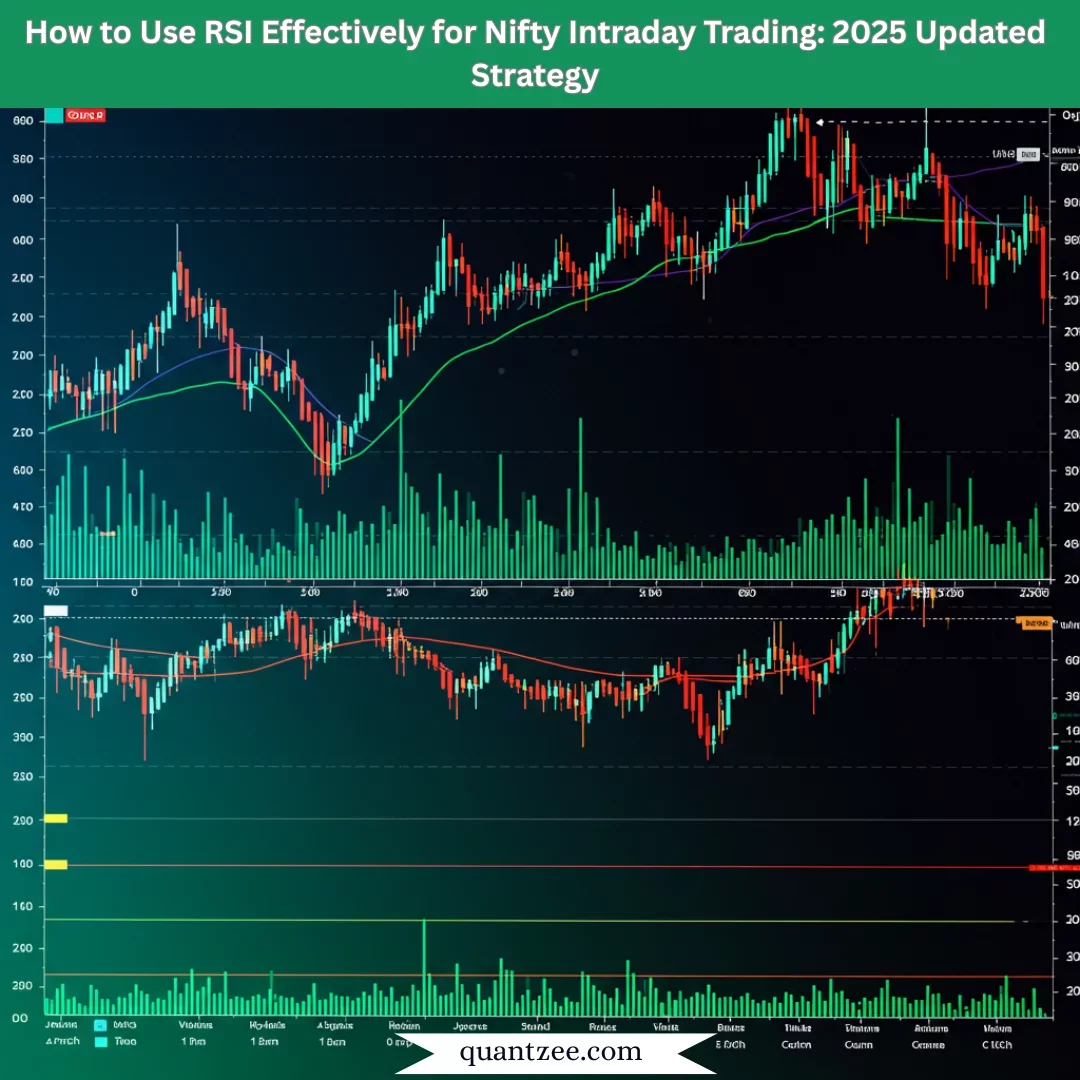The Advantages and Disadvantages of Using a Intraday Trading Algorithm Over Manual Trading Using Indicators

Seconds matter in intraday trading. In a trading strategy like yours, an extra fraction of a second in recognizing a signal or hitting the buy/sell button can make the difference between leaving with profit or with a loss. They wonder: Should I trade manually using indicators or let an algorithm do the work for me?
There are advantages to both manual and automated ways. Manual trading with trading indicators such as the RSI, MACD or Bollinger Bands offers traders greater control and freedom. It helps put a context around what the market is telling them and helps them make decisions off that context. But manual approaches are also labor-intensive and highly subjective.
On the other hand, a cool nifty intraday trading algorithmexecutes trades automatically when criteria are met. It does not grow tired, greedy, afraid. It can do multiple trades at the same time across the Nifty 50 stocks. But algorithms are not infallible either. They can snap under volatile conditions or break entirely if designed poorly.
In this guide, we compare and contrast the two methods we look at in detail, in order to weigh up the pros and cons using algorithms vs manual indicators for intraday trading. By now, you all know which method suits your style, or if there’s a hybrid approach that’s right for you.
1. Speed and Execution Power
Why It Matters
Speed is the lifeline of intraday trading. Prices can move 20–50 points in seconds on the Nifty, and hesitation means missed profits.
Algorithm Trading
A nifty intraday trading algorithm executes trades instantly when predefined conditions are met. For example, if MACD crosses above zero with volume confirmation, the algo will buy without delay. Execution is automatic and emotion free. This gives a massive edge in scalping or breakout trading strategies.
Manual Trading with Indicators
Manual traders rely on spotting nifty intraday trading signals themselves watching charts, analyzing RSI or EMA and then entering orders. Human reaction time (seconds or even minutes) is far slower than an algorithm. Fatigue also plays a role when tracking multiple stocks.
Pros/Cons
Algo Pros: Lightning-fast, never misses signals.
Algo Cons: May execute trades too quickly in false breakouts.
Manual Pros: Human judgment can filter weak signals.
Manual Cons: Slower, prone to hesitation.

2. Consistency vs Flexibility
Why It Matters
Winning in intraday trading requires sticking to a system.
Algorithm Trading
Algorithms are consistent. They follow rules 100% no panic, no second-guessing. A nifty intraday trading system based on algo logic ensures you never break discipline. If your system is profitable, consistency ensures long-term results.
Manual Trading with Indicators
Manual traders can adapt when markets behave unusually. For example, ignoring an RSI oversold signal in a trending market is something an experienced trader might do. Flexibility is an advantage but too much flexibility turns into inconsistency.
Pros/Cons
Algo Pros: Consistent, disciplined, removes emotions.
Algo Cons: Inflexible will keep trading rules even if conditions change.
Manual Pros: Can adjust to context, avoid false trades.
Manual Cons: Emotions cause rule-breaking.
3. Risk Management and Discipline
Why It Matters
Protecting your capital is more important than chasing profits.
Algorithm Trading
Algorithms can automatically apply stop losses, take profits, and position sizing. For example, you can program your algo to risk only 1% per trade. Advanced systems even use trailing stops to lock in profits.
Manual Trading with Indicators
Manual traders rely on their discipline to place stops. Many times, fear or hope stops traders from cutting losses. Even with the best trading indicators, a skipped stop-loss can wipe out gains from many trades.
Pros/Cons
Algo Pros: Strict risk rules, auto applied stops, no emotion.
Algo Cons: Stops may trigger too early in volatile spikes.
Manual Pros: Can hold trades based on broader judgment.
Manual Cons: Skipping stops leads to heavy losses.
4. Learning Curve and Complexity
Why It Matters
Not every trader has the time or skill to code or manage algorithms.
Algorithm Trading
Designing a niftyintraday trading algorithm may require coding knowledge. However, platforms like Quantzee make this simpler with drag and drop strategy builders and back-testing features. Still, learning how to optimize and trust an algo takes effort.
Manual Trading with Indicators
Most traders start with manual trading because it’s simpler. Learning RSI, MACD, EMA, and Pivot Points is easier than coding. But manual methods are harder to scale. You can’t track dozens of stocks at once.
Pros/Cons
Algo Pros: Scalable, back-testable, automates complex systems.
Algo Cons: Learning curve, requires setup and monitoring.
Manual Pros: Easier to start, no coding.
Manual Cons: Time-consuming, less scalable.
5. Costs and Accessibility
Why It Matters
Costs can eat into trading profits software, subscriptions, and time count.
Algorithm Trading
More complicated systems may utilise VPS hosting, API’s and paid data feeds. Now, however, platforms like Quantzee have emerged to offer cheap and easy plug-and-plug automation and make algo trading available to retail traders.
Manual Trading with Indicators
Manual trading is cheaper. Despite all the plan offerings, the majority of the brokers will give you a free charting platform with some basic trading signals included. The expense here isn’t cash but time and thought.
Pros/Cons
Algo Pros: Cost effective in long-term, if scaled.
Algo Cons: Higher initial costs.
Manual Pros: Low financial cost.
Manual Cons: Higher opportunity cost (time).
Conclusion
Autmated algorithmic trading and manual trading using trading indicators provide constant learning during intraday trading.
For those of you who have full control and don’t mind finding the trades, manual trading is what you want.
If you are after velocity and discipline, then perhaps a nifty intraday trading algorithm would suit you better.
In practice, many traders do a hybrid form: they manually surf for inifty intraday trading algorithm; once identified, they simply use the algorithm to execute. With systems such as Quantzee, it is even possible for non-coders to use automation. In 2025 the top traders will use both, harnessing the judgment of human traders for its judgment and machine force for its precision.
FAQs
Q1: Can algorithms replace manual trading completely?Not fully. Algorithms are fast and consistent, but manual judgment is valuable in unusual conditions. The best approach often combines both.
Q2: Is manual trading still relevant in intraday trading?Yes. Many traders still rely on trading indicators like RSI and MACD. Manual methods are flexible but require discipline and time.
GET IN TOUCH
Mail us at: [email protected]
Find detailed information about this at: https://quantzee.com/
Stay connected with us! Follow us on our social media channels for the latest information & updates.
Sign up for our newsletter
Subscribe to receive daily sparks of creativity, insights, and growth tips

